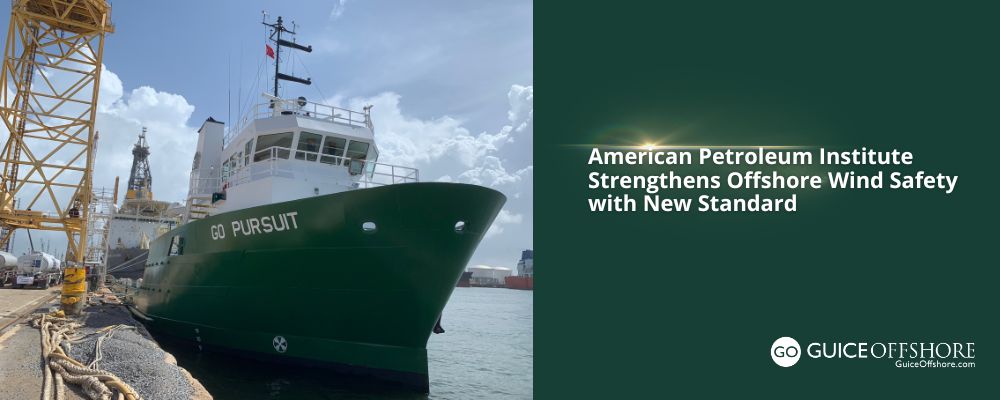During late July, the federal government advanced a new offshore wind project in the Gulf of Mexico, while delaying an auction that was set to occur just one year after the region’s first lease sale in 2023. The Bureau of Ocean Energy Management (BOEM) announced it was advancing an unsolicited lease request from U.S. renewable energy developer Hecate Energy to develop two areas off the Texas coast; BOEM also announced it would not proceed with a planned auction after conducting the region’s first in 2023, resulting in developer RWE securing an area off the Louisiana border.
BOEM is now seeking information on whether competitive interest exists in the areas included in Hecate Energy’s request. The areas are located off the coast of southeast Texas and had been previously identified by BOEM as potential Wind Energy Areas (WEAs) suitable for offshore wind leasing in 2021. WEA Option C totals 74,113 acres, and WEA Option D totals 68,239 acres, for a total of 142,352 acres.
Read more about the Hecate application on the BOEM Gulf of Mexico activities page HERE.
As required by the OCS Lands Act, BOEM is issuing a Request for Competitive Interest (RFCI) seeking comments and specific input regarding whether there is competitive interest in commercial offshore wind energy development in the areas requested by Hecate Energy. Click HERE to view the RFCI.
- To comment on the RFCI, go to www.regulations.gov and search for BOEM-2024-0039. BOEM may use comments received to further identify and refine the area(s) being considered for wind energy development and inform future environmental analyses related to the potential lease area.
If BOEM receives one or more indications of interest in acquiring a commercial wind lease from qualified entities, BOEM may decide to move forward with a competitive lease sale. If BOEM does not receive competing indications of interest from qualified companies, BOEM may move forward with a noncompetitive lease issuance to Hecate Energy. BOEM worked with NOAA’s National Centers for Coastal Ocean Science to identify 14 potential WEAs via a comprehensive ecosystem-based ocean planning model as detailed in a joint report published in 2021.
The areas contained in Hecate Energy’s unsolicited lease request were identified as part of that effort and are different than the areas (WEA I-1, WEA I-2, WEA J, and WEA K) included in BOEM’s Proposed Sale Notice (PSN) for a second Gulf of Mexico offshore wind lease sale, published on March 21, 2024. The first lease sale in the Gulf of Mexico was held in August of 2023 and one lease was awarded to RWE Offshore US Gulf LLC.
BOEM received 25 comments in response to the March 2024 PSN, with one company expressing interest in participating. As a result, BOEM is cancelling this sale due to a lack of competitive interest. BOEM may decide to move forward with a lease sale at a future time, based on industry interest.
“The Gulf region benefits from great offshore wind resources and existing energy infrastructure,”said Gulf of Mexico Regional Director Dr. James Kendall. “The interest from industry leaders such as Hecate and RWE demonstrates the commercial potential in the region. As we continue to explore these opportunities, we will ensure that any potential development is done in a way that avoids, reduces, or mitigates potential impacts to ocean users and the environment.”
The Oceantic Network reported that the Gulf of Mexico offshore wind market is moving forward with key policies falling into place. Louisiana has begun its state Offshore Wind Roadmap process that will identify key actions the state can take to support development.
Both the Oceantic Network and the Pew Charitable Trusts released reports detailing the regional supply chain capabilities and businesses already at work in the region. During late July, the U.S. Department of Energy released the first steps of a wider transmission study effort for the region.
The Gulf of Mexico is already heavily involved in offshore wind’s buildout. The Oceantic Network closely tracks supply chain contracts and has found 23% of the 1,500 U.S. contracts are going to Gulf-based firms. Nearly $1.3 billion in vessel orders and retrofits are flowing to Gulf shipyards from Texas to Florida.
“The Gulf of Mexico is the U.S. offshore wind industry’s supply chain engine, providing the workforce, offshore expertise, vessels, and fabrication yards that are building out our first East Coast projects, and is poised to become a major regional market of its own,” said Sam Salustro, vice president of strategic communications at Oceantic Network. “This decision moves offshore wind energy forward in a deliberate and sustainable manner for the region by creating pathways for key pioneering projects. This development enables critical support structures to advance, ensuring the development of a robust market that leverages the Gulf’s unique infrastructure and capabilities. Offshore wind’s momentum continues, with unrelenting state demand pushing the industry forward and every new job created building confidence and support in communities across the nation.”
Guice Offshore Has the Jones Act-Qualified Vessels To Help Meet America’s Offshore Wind Industry Needs
Guice Offshore’s growing fleet of Jones Act-compliant, dynamically positioned offshore supply vessels, mini supply vessels and platform vessels is well positioned to help meet our nation’s wind energy infrastructure installation and service goal deadlines, whether it’s crew transfer, service, cable laying, subsea work like scour protection or equipment transportation.
Guice Offshore vessels are well-maintained, well-manned and feature ample accommodations and sought-after equipment such as A-frames, cranes, winches, moonpools, deck sockets and essentials to facilitate a spectrum of highly specialized offshore projects.
We hold strategic partnerships throughout the United States and maintain our highly capable vessels in accessible locations for quick response to myriad needs of the many specialty industries we serve, including Offshore Wind.
In fact, Guice Offshore provides our offshore wind clients with a unique method of “walk to work” crew transfer that is creating both safer conditions for workers and a more nimble and cost-effective way of doing it for offshore wind developers. Traditional walk-to-work (W2W) gangways are typically substantial assemblies that require a larger vessel to carry and implement. Guice Offshore has crafted an articulating one that operates with a motion compensating system and clamps to keep the walkway firm and steady against the sides of an offshore wind structure as it moves with the motion of the vessel.
Headquartered in Covington, Louisiana with an operations base in Lafayette, Louisiana and a northeastern Rhode Island office, Guice Offshore operates a 16-vessel fleet of U.S. Flag offshore vessels that includes Subchapter L & I mini supply vessels, multi-purpose and platform vessels in the 150-ft, 170-ft, 205-ft and 294-ft. class with DP1 and DP2 certifications.
Guice Offshore operates from coast to coast in North America and select international locales.
Additionally, our subsidiary, GO Marine Services, a catering and offshore labor contractor, supports mission requirements that help minimize mobilization time and expense for Guice Offshore customers with special services like marine riggers, roustabouts and certified protected species observers in compliance with marine mammal regulatory requirements.



